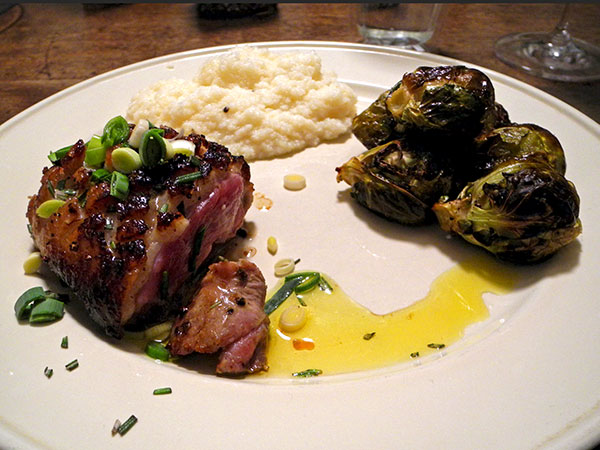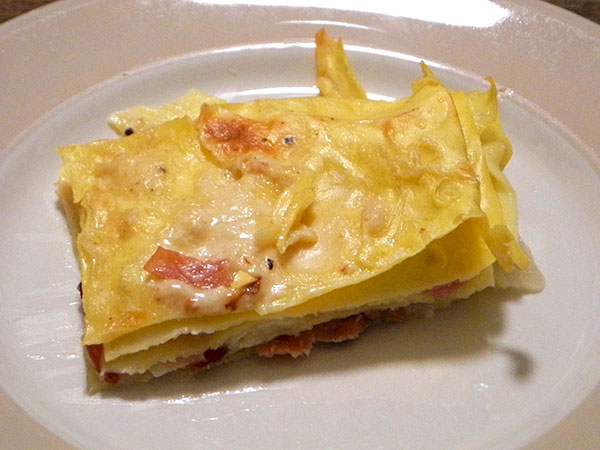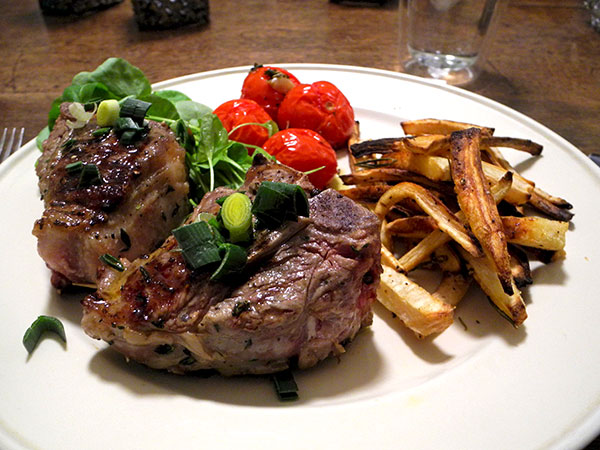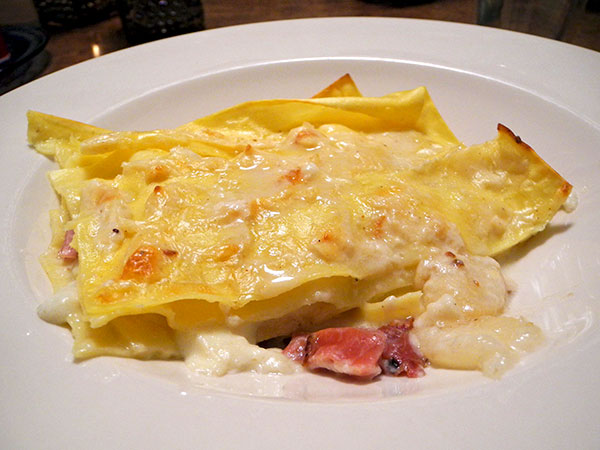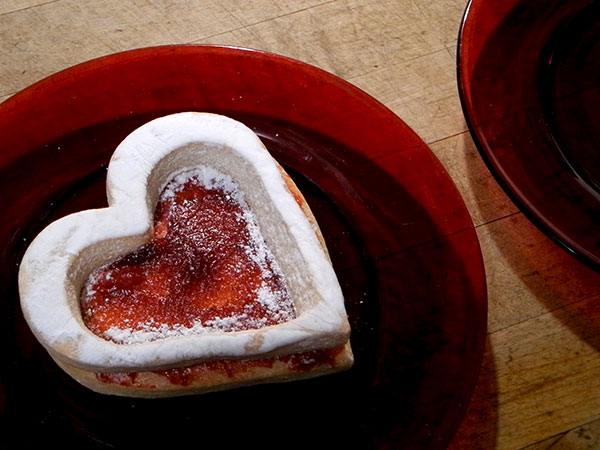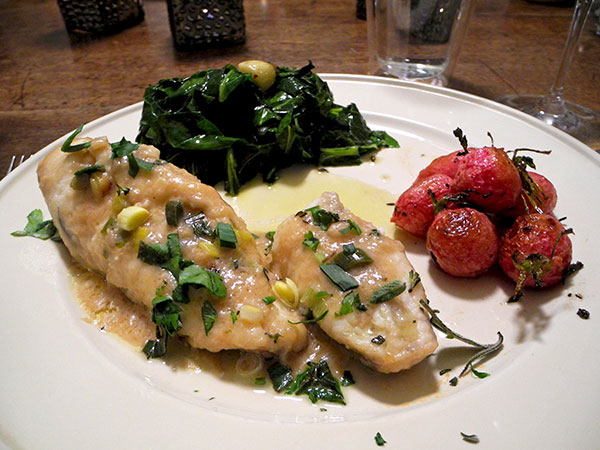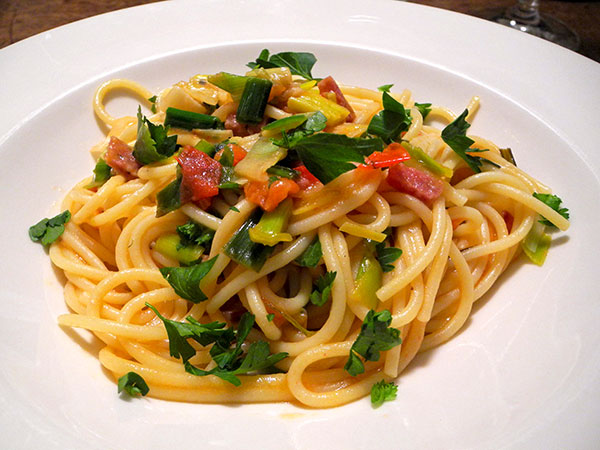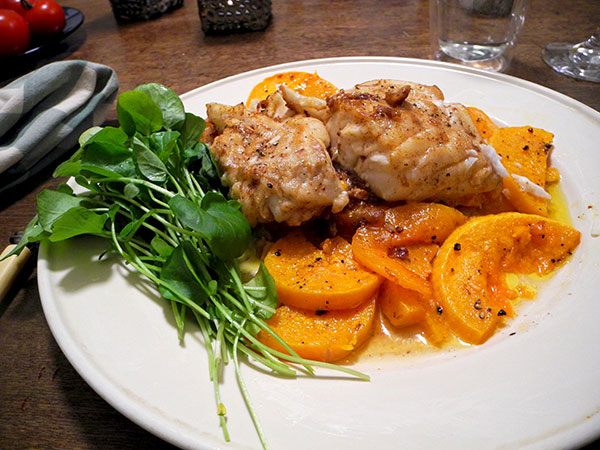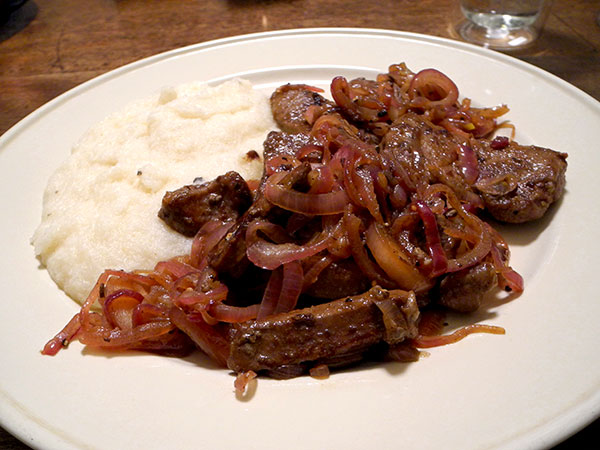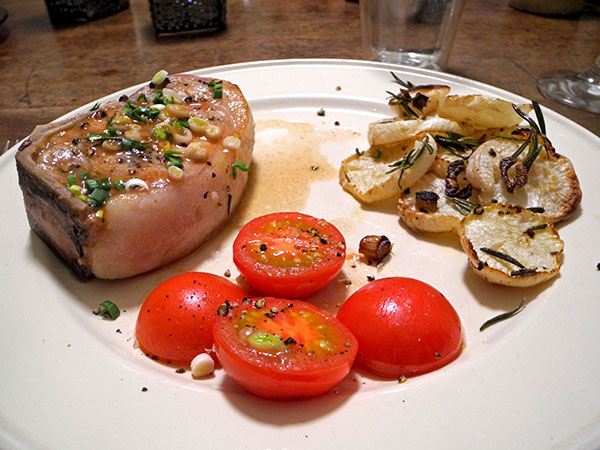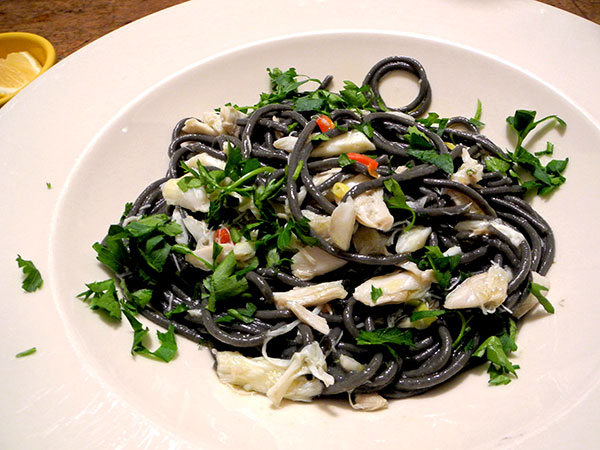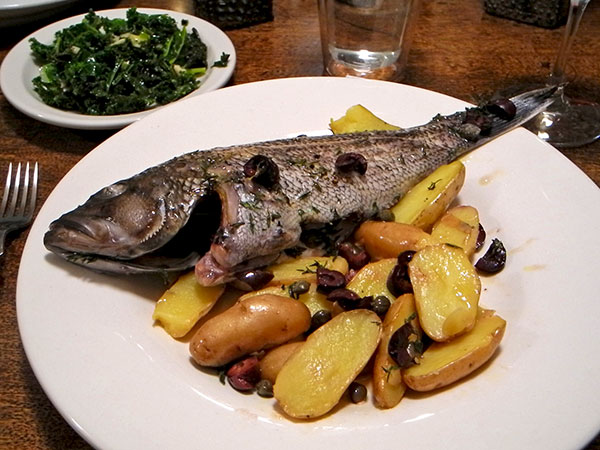Note to self: This was really, really good.
Once again the weather had shut out the Union Square Greenmarket fish sellers today. I had no other plan for dinner; not having defrosted anything the night before. I was very much conscious of the continuing cold weather, so I decided that we might be excused if we enjoyed a meat entrée two days in a row. I was going to be near Eataly today anyway, so I popped in and picked up a small-ish Pat La Frieda duck breast, one of our favorite game-like meats.
We had a bit of the speck and pear lasagna left over from Valentine’s Day; it made a delicious primi to introduce the rich duck. I also had some white polenta remaining from a meal of Venetian lambs liver last Wednesday. A dozen or so what I was told were finally the very last Brussels sprouts of the season became the contorno.
- one three-quarter pound Pat La Frieda duck breast from Eataly, brushed with salt, pepper, and a bit of sugar, allowed to rest for half an hour before pan-fried, allowed to sit again for a few minutes, cut into two pieces, and finished with a squeeze of lemon, some chopped rosemary from John D, Maderna Farm, one sliced baby leek from Rogowski Farm, a squeeze of lemon and a dribble of olive oil (in the picture above, the small piece at the edge of the breast itself is half of the tenderloin)
- Brussels sprouts form John D. Maderna Farm, tossed with salt, pepper, and some olive oil, and roasted in a 400º oven for about half an hour
- polenta left from an earlier meal, heated and refreshed with the addition of a bit of water, and the addition of a couple knobs of butter
- the wine was a California red, Akiyoshi Merlot, Clarksburg 2013, from Naked Wines
- the music was Bruckner, Symphony No. 4, performed by Eugen Jochum and the Dresden Staatskapelle
- the primi was a serving of a leftover lasagna of speck, pear, Bechamel sauce,mozzarella di bufala, and cayenne pepper, reheated for about twelve minutes at 350º
